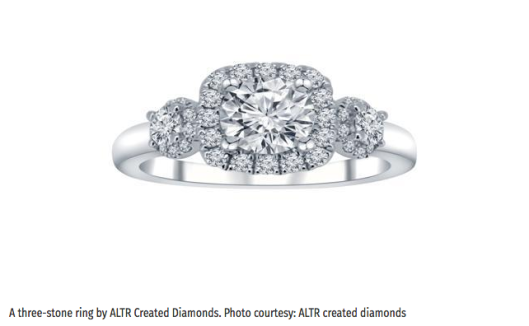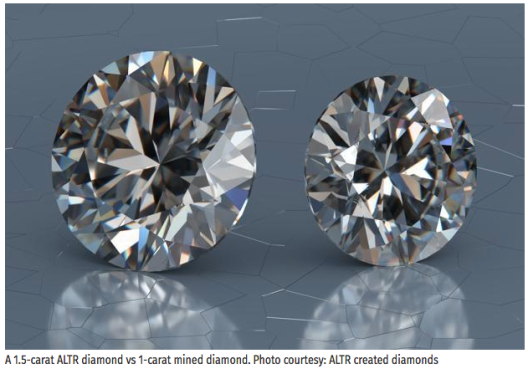Tags
De Beers Group, Diamond Foundry, Diamond Producers Association, Diamonds, Lab-grown or Man-made Diamonds, Mined Diamonds, Recycled Diamonds, Sustainability, Sustainable Luxury
Published: The Voice of Fashion, June 5, 2019, World Environment Day
Images courtesy DPA and Diamond Foundry.
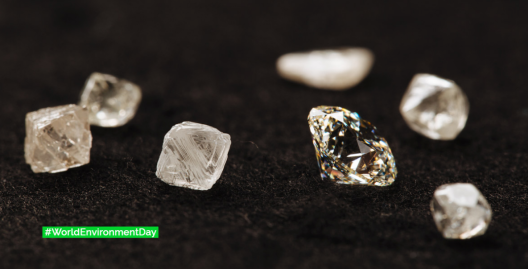
Exactly 20 years ago, Advertising Age (global media brand now called Ad Age) proclaimed the 1948 “Diamond Is Forever” De Beers (diamond mining company) advertisement as the slogan of the (last) century. This remains a testimony to the successful positioning of the diamond as a sparkling beacon of romantic love. But perhaps it is time to review the price we may be paying for it ecologically.
India is one of the largest markets globally in the purchase and manufacture of diamond jewellery, showing steady growth in popularity vis-à-vis traditional gold jewellery. And yet, there is a remarkable disinterest in the environmental effects of the diamond industry—perhaps due to lack of genuine information, inadequate media coverage and strong marketing by big diamond houses towards keeping the romance of diamonds alive.
The Impact of Diamond Mining
At the most basic level, traditional mining creates displacement of wildlife and vegetation. Often this leads to irreversible ecological damage, industrial and chemical waste, heavy water consumption, greenhouse gas emissions and consumption of fossil fuels.
Globally, with the increasing popularity of ‘eco-friendly’ lab-grown diamonds, there has been a renewed interest in the sustainability of mining. Perhaps in response to that, on May 2, 2019, the Diamond Producers Association (DPA) released a commissioned report, ‘Total Clarity’, to evaluate the benefits of the mining industry. But can that be taken at face value? The DPA, formed in 2016, comprises seven companies including the De Beers Group, representing approximately 75per cent of the world’s rough diamond production.
Jean-Marc Lieberherr, the chief executive officer of the DPA admits, “On the environmental front, the impact is globally negative, like for any large-scale industrial activity. Today, 100per cent of the irreversible environmental costs associated with large-scale diamond mining by DPA members are linked to greenhouse gas emissions, which is equivalent to 160kg per polished carat.” The DPA report speaks of renewable energy, biodiversity programs, and land being reclaimed at the end of the mining cycle. But it is not as simple as putting the earth back into the ground—closure can take many years and several hundred million dollars.
Meanwhile, sustainability has to take environmental as well as socio-economic factors into consideration—after all, the $82 billion industry provides a livelihood for 10 million people worldwide (De Beers Group insight data 2017).
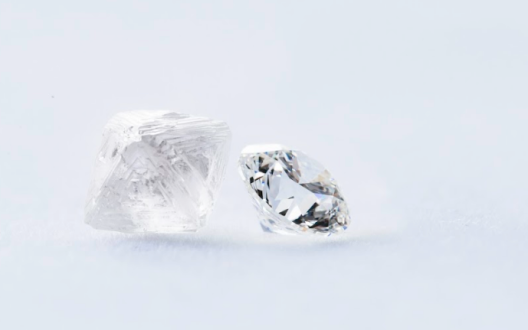
Is Your Diamond Conflict-Free?
In a 2015 Time magazine (American weekly magazine) cover story, 34-year-old Max Rodriguez says, “I don’t want a symbol of our union to also be associated with chaos and controversy and pain.”
Diamonds bought or sourced from big brands like Forevermark and De Beers come through structured channels. But 20 per cent of world diamond production by volume (Diamond Development Initiative or DDI data), is from the Artisanal and Small Scale Mining (ASM) of diamonds, 90 per cent of which operates informally and with little oversight.
Besides the endemic environmental damage, miners face difficult and occasionally hazardous working conditions, lack of access to fair market prices, and the use of diamonds as potential “currency” to finance rebel armies (Total Clarity report).
Decades after the 2006 political war thriller, Blood Diamond, which described the grim connection between diamond mining and the financing of conflicts, most believe that diamond mining has come a long way with the Kimberley Process, an international diamond certification system set up in 2003. And yet, as reports suggest, not only is the Kimberly process riddled with loopholes, it also doesn’t guard against human-rights abuses, unfair labour practices or unsafe mining conditions.
Innovations to Create Accountability
De Beers, in partnership with the DDI (that works to effect change in the ASM sector) launched GemFair in a pilot program last year in Sierra Leone (West Africa). It includes a digital app to track diamonds recovered by artisanal miners through the supply chain. Ian Smillie, chair of the DDI and founding participant in the creation of the Kimberley Process says, “GemFair undertakes to make an offer on all diamonds produced by these groups at fair market prices. It has shortened the pipeline and created a strong traceability mechanism.”
And after several years of trial and error, last month the DDI formally launched an innovative certification system, the Maendeleo Diamond Standards.
The Alternative To Mined Diamonds
Last year in November, a manmade diamond ring by San-Francisco (the US)-based Diamond Foundry and co-designed by Sir Jony Ive, Apple’s chief design officer, was auctioned for $461,250 at Sotheby’s (New-York-based auction house).
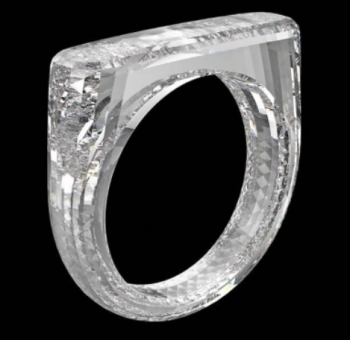 Diamond Foundry ring
Diamond Foundry ring
The industry and the consumers may be polarised on manmade versus mined diamonds, but technology offers a choice. A diamond can be made in a lab, by replicating the same conditions that it takes to make a diamond over many years below the earth’s surface (HPTP—high pressure, high temperature) or by chemical vapour deposition (CVD). Today, it is possible to easily create a Type IIA diamond, which is like the ‘Koh-i-Noor’ (one of the largest cut diamonds in the world)—rare among mined diamonds.
A lab-grown diamond also needs to be responsible for labour practices and particularly, high levels of energy consumption, due to the extreme temperatures required to produce a diamond. Diamond Foundry, for instance, has been certified carbon neutral and their zero net carbon footprint includes their employees commuting to work.
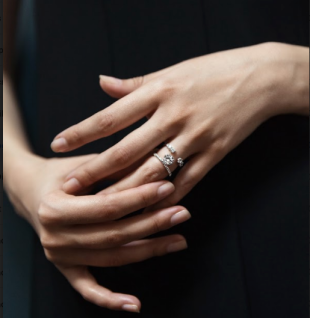
Bringing a Diamond Back
Recycling diamonds makes a diamond’s journey last longer by resetting a stone in a modern design. Rough Polished (analytics firm) reports that an estimated $1 trillion worth of ‘used diamonds’ are locked away in private hands. The diamond industry, by virtue of the marketed emotions attached, thwarts the potential recycling of diamonds.
“Many of today’s younger consumers aren’t only open to alternatives, they are willing to pay a premium for products that have a low environmental impact or are socially responsible,” states a Morgan Stanley 2016 research report.
Lieberherr points out, “We are not perfect, no industry is—but we are working to be better.” As in most cases, blaming an industry is not the answer; rather it is in holding the stakeholders accountable. And as a consumer, demanding specifics to make informed decisions. After all, the critical step, as in all sustainability conversations, is to create a truly transparent supply chain.

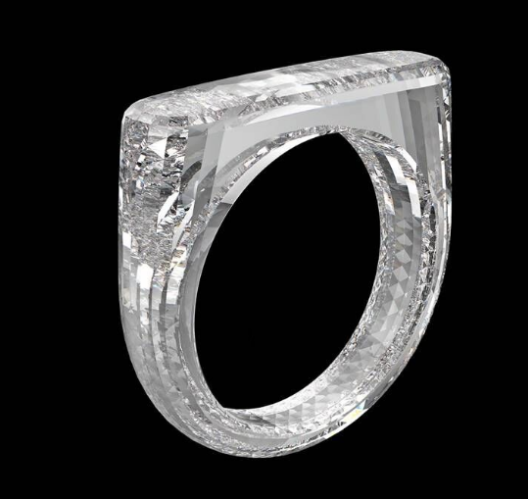 The (Red) Diamond by the Diamond Foundry
The (Red) Diamond by the Diamond Foundry